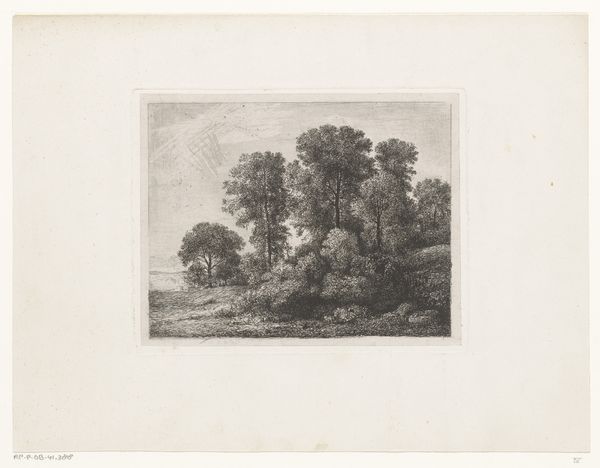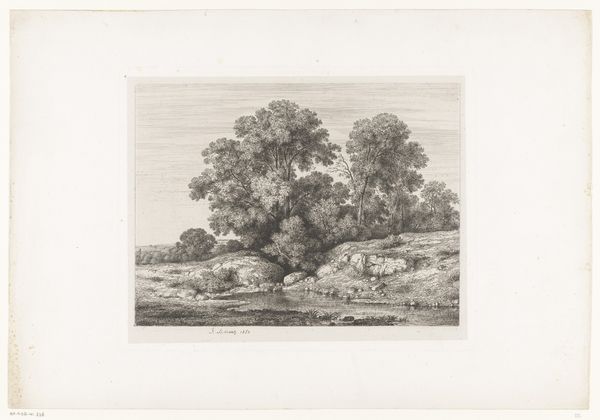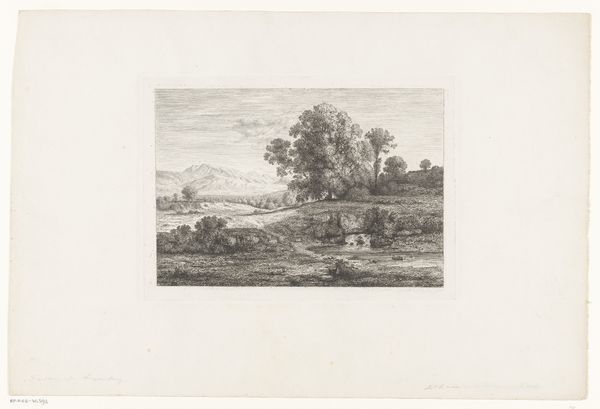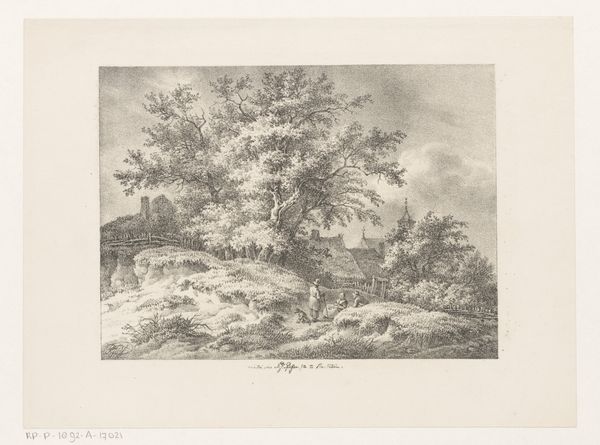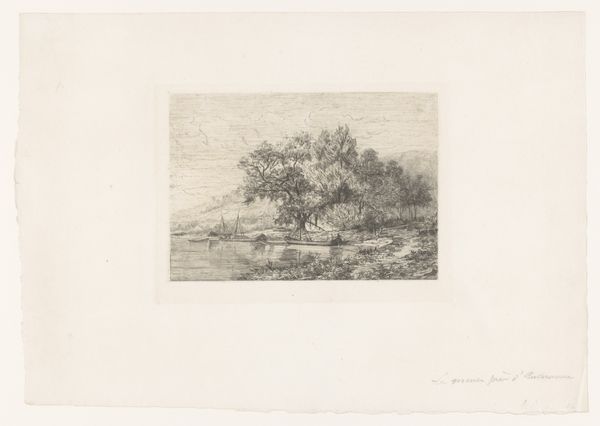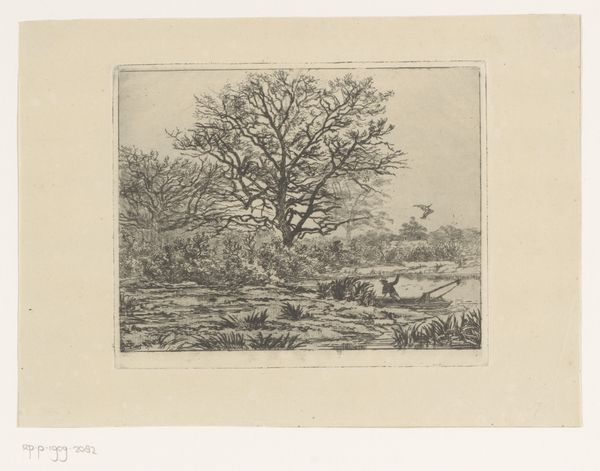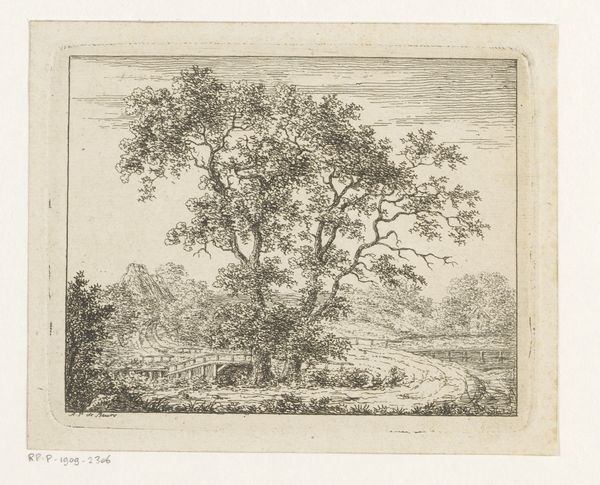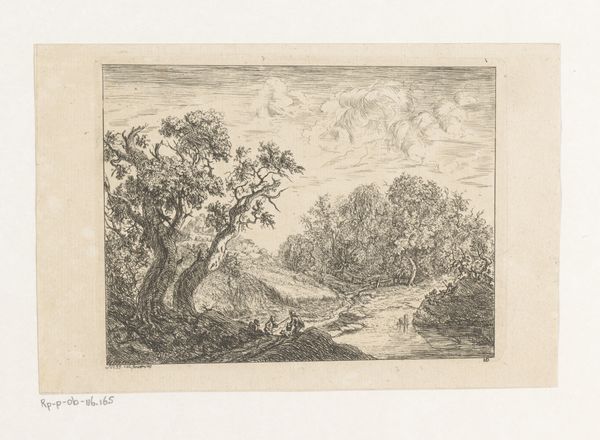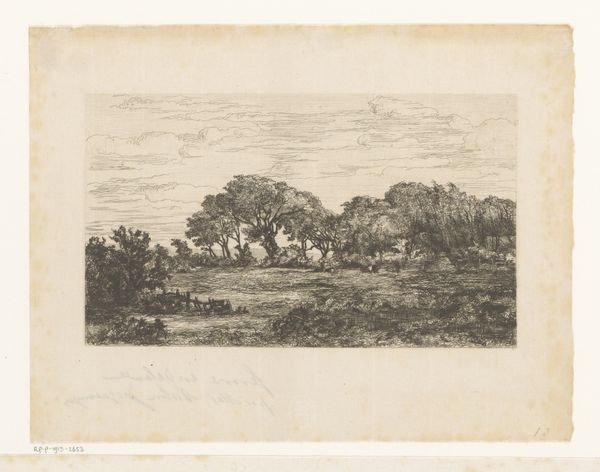
The Bouquet of Trees, or The Lindens (Souvenir of the Sarthe) 1861
0:00
0:00
Dimensions: 280 × 401 mm (plate); 435 × 589 mm (sheet)
Copyright: Public Domain
Curator: Just look at this etching by Eugène Blery, “The Bouquet of Trees, or The Lindens (Souvenir of the Sarthe)", created in 1861. Isn’t it marvelous? Editor: It's striking, the detail is incredible! I am immediately drawn to the tree's grandness, it dominates the landscape. You almost feel the air move through its leaves. Is it simply a lovely nature scene, or something deeper? Curator: That's precisely where Blery succeeds. He uses etching to celebrate a specific location and capture the quiet essence of French rural life. He positions the viewer to look up towards a beautiful linden tree, making nature almost reverential. Editor: Reverential indeed! The detail, achieved through etching, feels almost photographic, doesn't it? But I’m struck by how this seemingly idyllic view is also a constructed perspective, maybe even idealized. A stage set with perfectly placed trees. Curator: It's not a straight recording. Blery certainly uses realism but romanticizes his subject through light and composition. It’s part of the enduring power of landscape prints, though; this desire to arrange nature for our appreciation. Editor: Makes you wonder, who was this "Souvenir" meant for? Did wealthy urbanites desire to bring home such images of an imagined countryside? Were they longing for simpler lives they’d only ever observed through train windows? Curator: Undoubtedly. The growth of cities spurred nostalgia for the countryside, a space unspoiled by industrialization. Prints like Blery's answered a need— providing a beautiful and affordable luxury to those who were looking to hold on to simpler images of the land and to perhaps create a political statement for nature’s value during the period. Editor: It really does demonstrate how even apparently straightforward images can contain such social context! The tension between untouched nature and staged presentation is particularly poignant here. Curator: Absolutely. And now when I return to the print itself, the quiet majesty is amplified by my awareness of those historical forces. Editor: Yes, what initially read to me as just pretty trees now possesses such an interesting story! I will spend much more time pondering how an idyllic print might contain political weightiness of French landscape in the mid-19th Century.
Comments
No comments
Be the first to comment and join the conversation on the ultimate creative platform.

